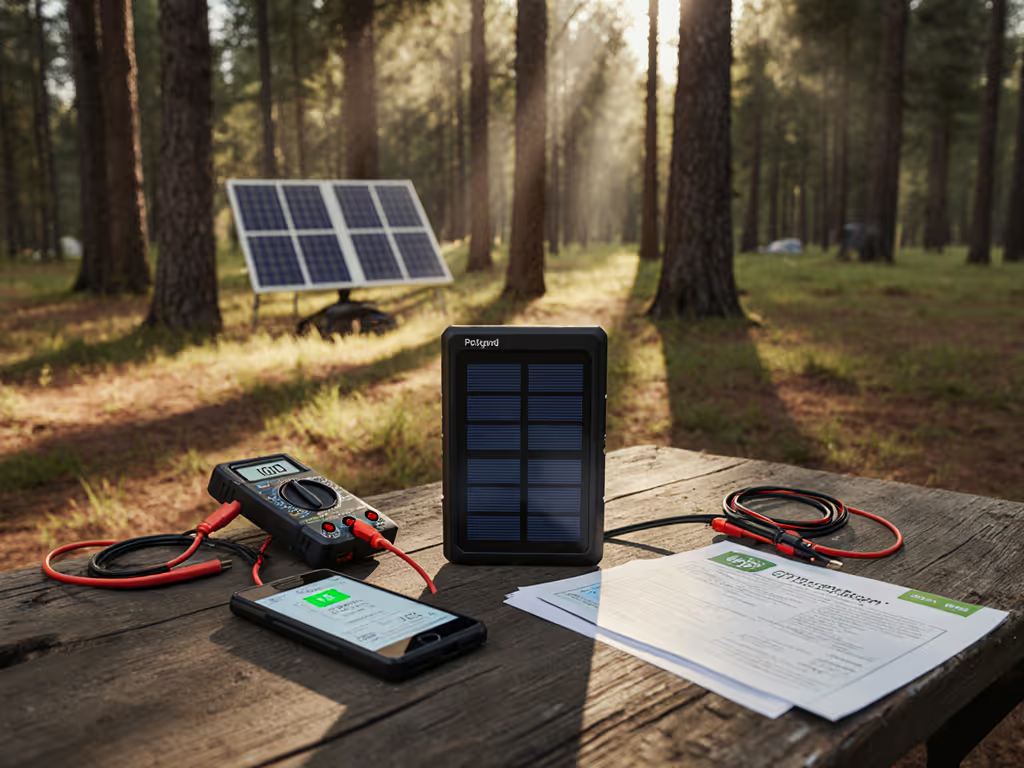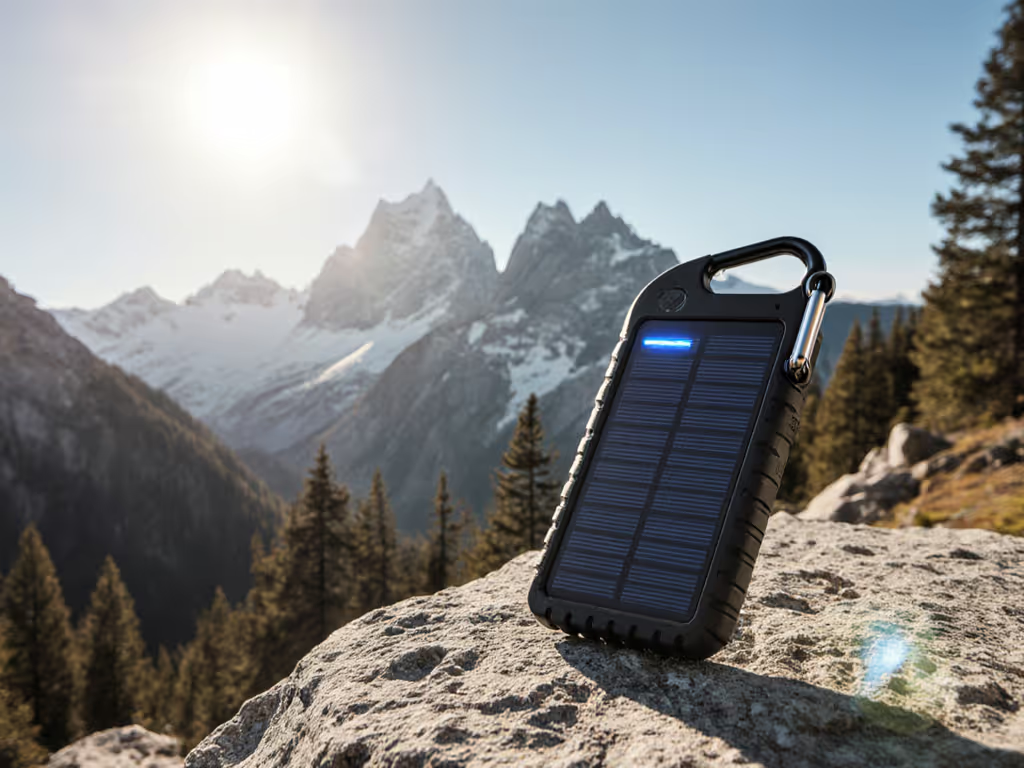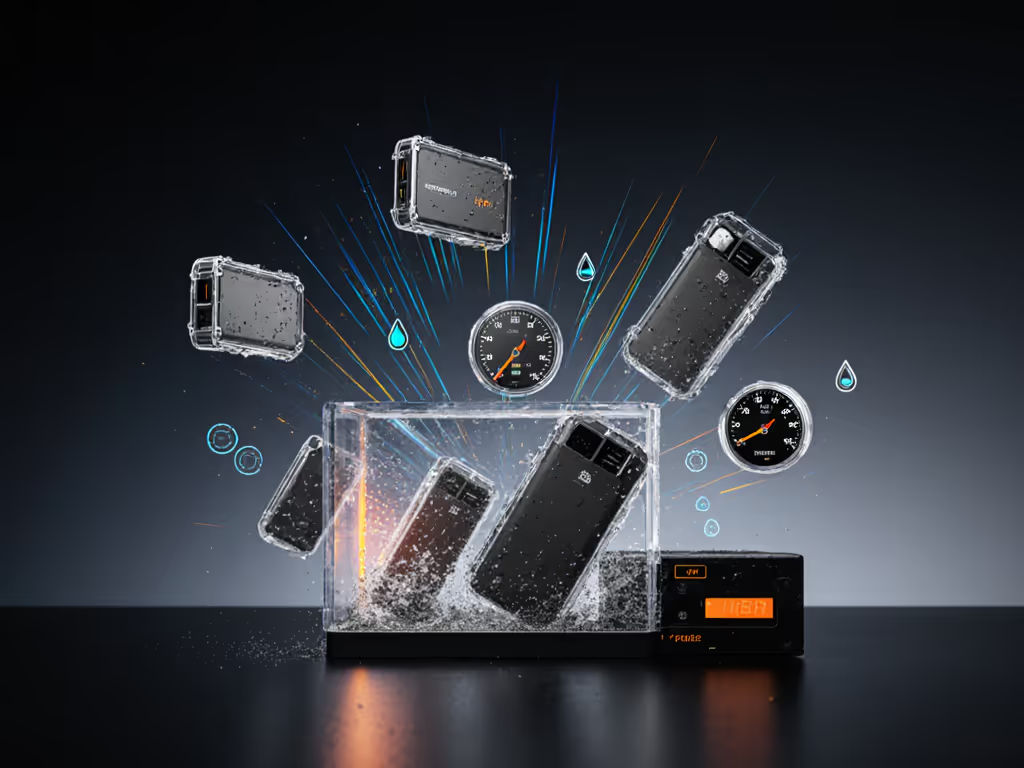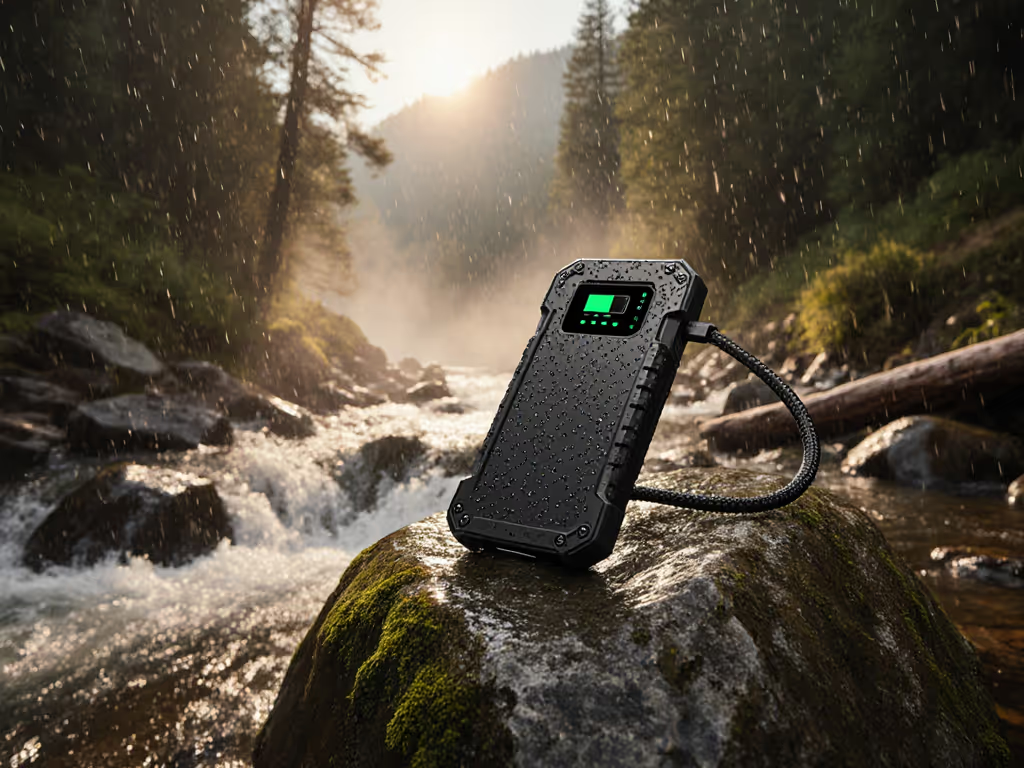
Solar Power Bank Truth: When Outdoor Charging Actually Works

As a safety auditor focused on airline-ready power solutions, I've seen too many travelers lose critical gear at checkpoints due to solar power bank documentation failures. These devices promise off-grid power, but without normative references cited in labeling (especially watt-hour (Wh) ratings) they become airport liabilities. True compliance transforms anxiety into actionable readiness. While solar charging offers valuable emergency charging outdoors, its real-world performance hinges on precise environmental factors and engineering rigor. Let's dissect when solar power banks deliver reliable off-grid power solutions versus when they create false confidence.
The Capacity Reality Check: mAh vs. Watt-Hours
Marketing often fixates on milliampere-hours (mAh), but solar power bank capacity must be evaluated in watt-hours (Wh) for true cross-device comparison. A 20,000mAh bank rated at 3.7V stores just 74Wh (20,000 × 3.7 ÷ 1000), not the 100Wh some users assume. This distinction is non-negotiable for airline compliance, and most carriers cap carry-on batteries at 100Wh. For step-by-step airline rules, packing tips, and allowable watt-hour limits, see our international travel power bank guide. I've witnessed devices seized at security over omitted Wh metrics. Always verify:
- Actual Wh output (not input capacity)
- Voltage conversion losses (typically 15 to 25%)
- UN38.3 certification for transport safety
Labels prevent losses. Without precise labeling language (Wh, limits), even a functional bank fails acceptance criteria at critical checkpoints.
Manufacturers frequently inflate mAh ratings by measuring at 3.7V while devices draw power at 5V. This creates a 20 to 40% capacity gap between spec sheets and delivered energy, enough to strand a hiker mid-trail. Demand third-party teardown reports showing real-world derating curves under load.
Solar Charging Efficiency: Physics Over Promises
Environmental Dependencies
Solar isn't a plug-and-play solution. Solar charging efficiency depends on immutable physics, not marketing claims. Critical variables include:
- Sunlight angle: Optimal charging occurs within ±20° of perpendicular exposure. Tilting panels toward the sun (using apps like Sun Surveyor) can double harvest rates versus flat placement.
- Irradiance levels: 1,000W/m² (full noon sun) vs. 100W/m² (heavy overcast) creates a 10x speed differential. Cloud cover reduces output to 10 to 25% of rated capacity.
- Temperature extremes: Panels lose 0.5% efficiency per °C above 25°C. Conversely, lithium cells below 0°C trigger thermal throttling, halting charging entirely.
A 20W solar panel under ideal conditions (1,000W/m², 25°C, optimal angle) takes 12+ hours to recharge a 74Wh bank. Real-world conditions often stretch this to 3 to 5 days. Treat solar as emergency top-up, not primary recharge.
Engineering Constraints
Quality monocrystalline panels outperform polycrystalline by 15 to 20% in low-light scenarios, a critical factor for dawn and dusk charging. But panel size presents tradeoffs: larger surfaces capture more energy yet compromise portability. Look for units with MPPT (Maximum Power Point Tracking) controllers, which boost harvest efficiency by 20 to 30% in partial shade by dynamically optimizing voltage and current. Without MPPT, intermittent cloud cover causes destructive charge cycling that degrades cells.

Figure 1: Real-world solar harvest curve. Note the exponential drop below 500W/m² irradiance (typical cloudy conditions). Data source: IEC 61215-2 field trials.
Durability as Compliance: Beyond IP Ratings
For off-grid power solutions, physical resilience equals operational reliability. Many users overlook how environmental stressors invalidate solar inputs:
- Water exposure: An IP67 rating (submersion to 1m) prevents immediate failure but doesn't guarantee panel longevity after repeated wet/dry cycles. Saltwater exposure accelerates corrosion.
- Thermal shock: Rapid temperature shifts (for example, desert nights) cause microfractures in solar cells. Ruggedized units with aluminum housings mitigate this.
- Impact resistance: A 1m drop can delaminate solar junctions even if the casing survives. Military-grade DROP testing (MIL-STD-810H) provides meaningful validation.
Durability isn't optional, it is embedded in risk matrices and mitigations for field operations. I recall a researcher whose bank failed during a monsoon because its "water-resistant" seal degraded after three uses. Proper documentation should include test reports verifying IP ratings under repeated stress cycles.
Best Conditions for Solar Charging: A Data-Driven Guide
Maximize success by aligning use cases with best conditions for solar charging:
| Scenario | Minimum Requirements | Realistic Output | Caution Flags |
|---|---|---|---|
| Daylight hiking | 20W panel, >70% sun exposure | 15 to 25% daily capacity gain | Shaded trails reduce output to <5% |
| Emergency backup | Pre-charged bank + 10W panel | 5 to 10% device top-up per hour | Low-light efficiency <15% below 300W/m² |
| Basecamp use | 40W+ panel, 6+ sun hours | 80 to 100% daily recharge | Heat above 35°C requires shade management |
Crucially, solar input doesn't scale linearly with panel wattage. A 10W panel won't charge twice as fast as a 5W unit in low-light conditions, it may perform identically due to voltage dropouts. Always cross-reference manufacturer curves for irradiance thresholds.

Figure 2: Validated performance thresholds. IP67 units maintain function after 30 wet/dry cycles only when thermal shifts stay <20°C/h (per IEC 60529 Annex A).
The Compliance Imperative
Emergency charging outdoors fails when documentation gaps override engineering. A well-built solar bank without UN38.3 certification becomes landfill during transport. Safety paperwork and labels are features, not afterthoughts. Before deployment:
- Confirm Wh labeling matches IATA §II.L.3.9 requirements
- Verify protection ICs cover overcharge, short-circuit, and thermal runaway
- Audit documentation for IEC 62133-2 cell safety certification
In one instance, a journalist's critical work trip was salvaged because their power bank had a compliant spare explicitly labeled with Wh and UN38.3 data. The original unit (functionally identical but missing documentation) was confiscated. Precision here isn't bureaucracy; it's the difference between operational continuity and mission failure.
Conclusion: Solar as Calculated Risk Mitigation
Solar power banks deliver when treated as specialized tools within robust planning frameworks. They excel as emergency charging outdoors during extended daylight hours in temperate conditions but fail as primary power sources. Prioritize units with MPPT controllers, validated IP67+ ratings, and (most critically) complete documentation that meets airline and field compliance thresholds. Remember: Airlines scrutinize watt-hour labels, not promises.
For deeper validation, consult the UN Manual of Tests and Criteria (Rev. 7) for battery transport criteria or the IEC 61215-2 field performance standards. When your mission depends on off-grid power, engineering integrity must be measurable, not marketed. Because when the grid vanishes, your compliance paperwork becomes your lifeline.

